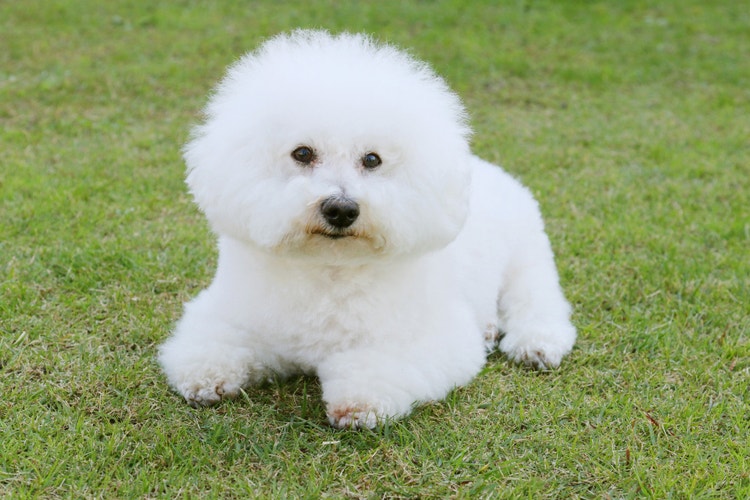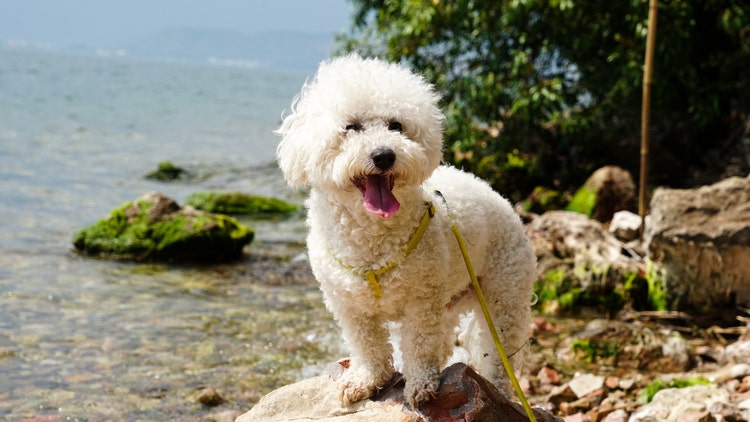

Bichon Frise


Where Is the Bichon Frise From?
The name Bichon is a derivative of Barbichon, which was the moniker given to the breed as descendants of the Barbet.
The Bichon was first reported in Spain, and it is believed that Spanish explorers in the 15th century brought their lapdogs to the Canary Island of Tenerife and left some behind. Over the next century, the breed’s appearance evolved into the Bichon we know today.
The Spanish brought some of the descendants of their pampered pets from Tenerife back to Spain in the 16th century. The dogs were given the name Bichon Tenerife for its alluring quality (and in hopes of increasing the breed’s value). The breed remained popular among Spanish nobility and artists through the early 19th century.
Despite a lull in popularity, the Bichon had a resurgence after World War I, and Belgian and French admirers established a breed standard in 1933. In 1934, the Bichon Frise (as they were now known) was acknowledged by the French Kennel Club and recognized by the International Canine Federation, giving rights to registration in the Book of Origins by France, Belgium, and Italy. The Bichon Frise is recognized as a French-Belgian breed instead of a Spanish breed due to their role in bringing the breed back to prominence.
The Bichon Frise was recognized by the American Kennel Club in the early 1970s.
Caring for a Bichon Frise
What Kind of Diet Does a Bichon Frise Need?
What Kind of Diet Does a Bichon Frise Need?
The Bichon Frise should be fed an age-appropriate, high-quality diet. As a natural performer, they may use their tricks to earn extra treats, so monitor snack consumption closely.
How Much Grooming Does a Bichon Frise Need?
How Much Grooming Does a Bichon Frise Need?
The Bichon Frise requires monthly grooming and bathing to maintain their poufy appearance. Ideally, they should be brushed daily or at least twice weekly to prevent mats from forming. They shed minimally, so regular clipping and brushing is essential for this breed.
Are Bichons Frises Healthy?
Are Bichons Frises Healthy?
The Bichon Frise is a healthy dog breed, but does have a few associated health concerns.
Ocular diseases are common for the breed, including cataracts, entropion, and corneal dystrophy. Routine eye examinations by a veterinarian can help sustain a Bichon’s ocular health.
Other diseases associated with the Bichon are neurological diseases (epilepsy and white shaker disease), orthopedic issues (atlantoaxial subluxation and patellar luxation), dermatitis, diabetes, patent ductus arteriosus, urolithiasis, and congenital hypotrichosis. Many of these diseases can be caught during routine health examinations and blood screenings by a veterinarian. Orthopedic issues and diabetes mellitus can be exacerbated by obesity, so try your best not to give this happy little performer too many treats.
The breed has an average life span of 12 to 15 years.
The Bichon Frise is predisposed to: epilepsy, cataracts, entropion, urolithiasis, corneal dystrophy, diabetes, patent duct arteriosus, congenital hypotrichosis, atlantoaxial subluxation, patellar luxation, white shaker disease, and dermatitis.
How Much Training Does a Bichon Frise Need?
How Much Training Does a Bichon Frise Need?
Bichon Frises can be a challenge to housetrain, so early socialization and training is always beneficial. Their eagerness to perform certainly makes teaching them to do tricks and keeping them engaged much easier.
Bichons love being social and may become bored and cause trouble when left alone for long periods of time.
How Much Exercise Does a Bichon Frise Need?
How Much Exercise Does a Bichon Frise Need?
The Bichon Frise is not an overly active breed, but does require a considerable amount of interactive play (due to their social nature). Routine walks can help prevent obesity. Teaching them new tricks will also help keep them happy and motivated.

Are You Ready to Adopt a Bichon Frise?
To adopt a Bichon Frise, start by making sure this type of dog will fit your lifestyle. Use our pet adoption checklist to walk through each step in the adoption process. Complete the necessary adoption applications and be prepared for interviews or home visits. Spend time with potential dogs to find a good match. Finally, prepare your home for the new pet, ensuring it's safe and welcoming.

Pet Insurance Options for the Bichon Frise Breed
Pet insurance for a Bichon Frise can help cover costs for conditions such as dermatitis and patellar luxation. Policies that include hereditary and congenital conditions, flexible coverage options, and reasonable premiums may be worth exploring.
Use our insurance aggregator tool to compare providers and find the best plan for your dog's unique needs.
What Are the Physical Characteristics of a Bichon Frise?
The head is the most distinctive part of the Bichon Frise’s body, and is often described as having a “powder puff” appearance due to its luxurious hair coat.
The breed’s eyes, nose, and lips are all black. Their drop ears are entirely covered in fluffy, white hair.
Bichon Frise Facts
Other Breeds to Explore
References
- Morris, Desmond. Dogs: The Ultimate Dictionary of Over 1,000 Dog Breeds. Trafalgar Square, 2002.
- American Kennel Club. The Complete Dog Book. Random House Digital, Inc., 2006.
- Wilcox, Bonnie and Chris Walkowicz. The Atlas of Dog Breeds of the World. T.F.H Publications, Inc., 1995.
- Bichon Frise Dog Breed Information. American Kennel Club, 2021.


